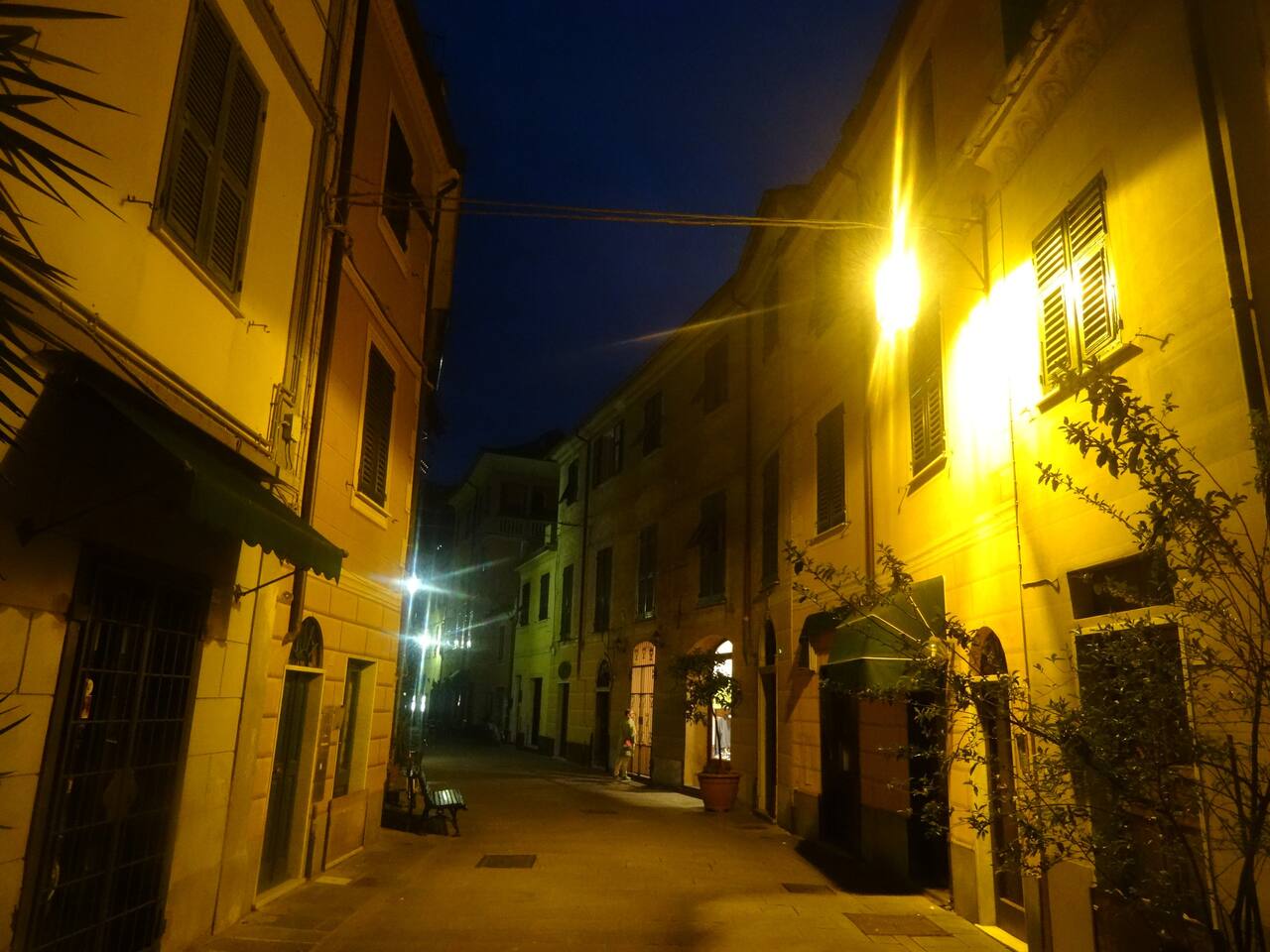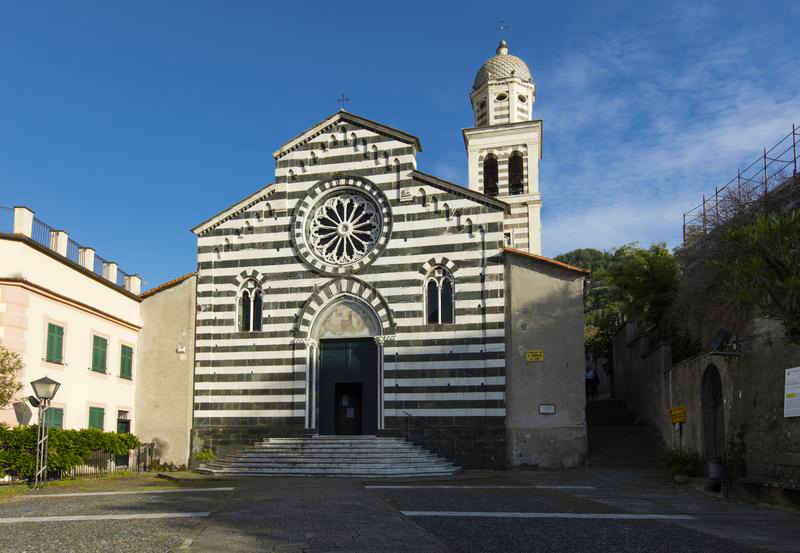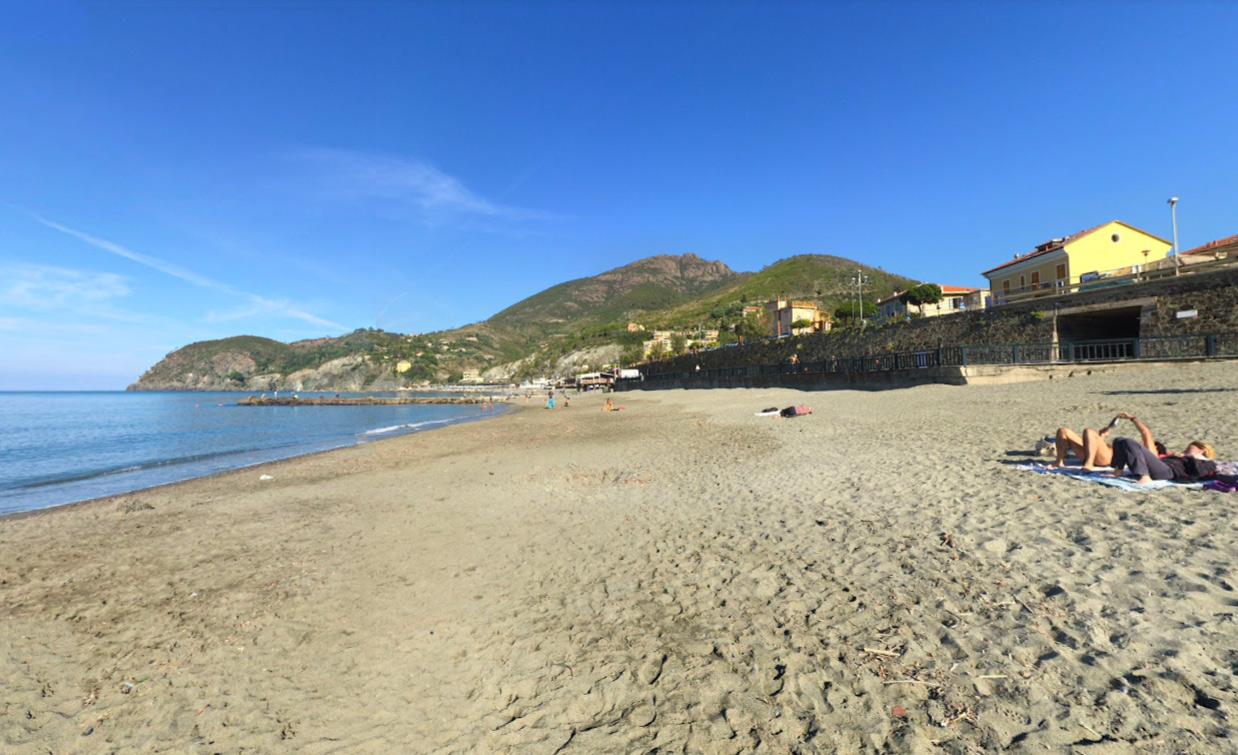The small seaside town of Levanto in the Province of La Spezia in Liguria is arguably a sixth Cinque Terre, possessed of a clean, well-maintained atmosphere which caresses both past and present with a fresh sea breeze and a kiss of green. This delightful spot was already inhabited in pre-Roman times, passing into the feudal hands of the Malaspina and the Genoese (1229) to become a flourishing maritime fortress.

Of historic interest is the old town, dominated by a 12th-century castle, the attached city wall and the wall’s splendid clocktower. The great appeal of this small town, however, is intangible. It lies in the harmonious coexistence of age-old structures alongside the modern; in a tranquillity fortified by an underlying strength. There is a comfortable degree of contrast: the front porch of a Caribbean-style beachside bar catches the sun all day long, while visitors stroll by towards the shady Loggia del Comune with its fine Roman architecture.
With its enviable location directly overlooking the water and its history dating back to Roman times, Levanto provides the perfect combination of a breathtaking natural landscape and treasured historical buildings. The valley lying behind the town is covered with pine and olive trees. The town is closed in by Mesco Peak and Levanto Peak on either side and is part of the mountain community of La Spezia’s riviera. It is so unique, that parts of this area have been included in the Cinque Terre National Park.
Walk through the alleys: a mix of medieval architecture and natural beauty.

Visitors can meander up the narrow alleys that lead from the sea to the 12th century castle, then walk back down along the medieval walls to St. Andrew’s Church making their way back to the beach and passing by the Darsena, the docks in the town’s ancient port. Levanto reveals another glimpse of its beautiful sea around every corner.

Art and history
Levanto preserves its history through ancient religious and civic buildings, and educates people on the town’s history through museums and permanent exhibits.
For being a relatively small area, Levanto provides the opportunity to visit numerous sacred grounds, including some ancient sites. Here are a few ideas for interesting walks:
- St. Andrea (13th cent. with facade and interior in characteristic two-tone design),
- Monastery of the Clarisse (early 17th century).

Although perhaps overrun by tourists at the height of the summer season, Levanto is otherwise an answer to any traveller’s Sunday morning daydreams. The quiet streets are lined by neat houses with pretty gardens. The beach is an Italian rarity: although small, it is sandy and open to the public.

Various sports and entertainment all in one place
Levanto is popular among avid surfers and scuba divers. The strong sea breeze is ideal for those who love windsurfing, surfing, and bodyboarding. Dive shops provide equipment and transportation, helping you plan spectacular dives all year round.
How to get there
Levanto can be easily reached by car right off the highway, by train, or even by boat.
By car:
Highway A 12 Genova – Livorno. Exit Carrodano-Levanto. After the tolls, keep following the signs for Levanto (about 12 km). It is located off the Genoa-Livorno toll highway, some 4 miles down a winding, twisting hillside road lined with olive trees and grape vines.
By train:
Take the Torino – Genova – Roma train that stops at the station of Levanto (main inter-regional train). The direct Intercity train goes to and from Milano Centrale. Regional trains run between Levanto and the Cinque Terre every hour and only take a few minutes. For further information, go to the official website for Italy’s railways. Tickets for the Levanto-Cinque Terre trains are valid for 5, 10, or 20 km, depending on the destination chosen. There is also a one-way ticket (valid for 6 hours) that allows you to get off and on as you please in each of the villages along the way. The ticket counter is open from 6:10 a.m. to 7:30 p.m.
For the intrepid hiker, it’s only 2.5 hours from Monterosso on foot.